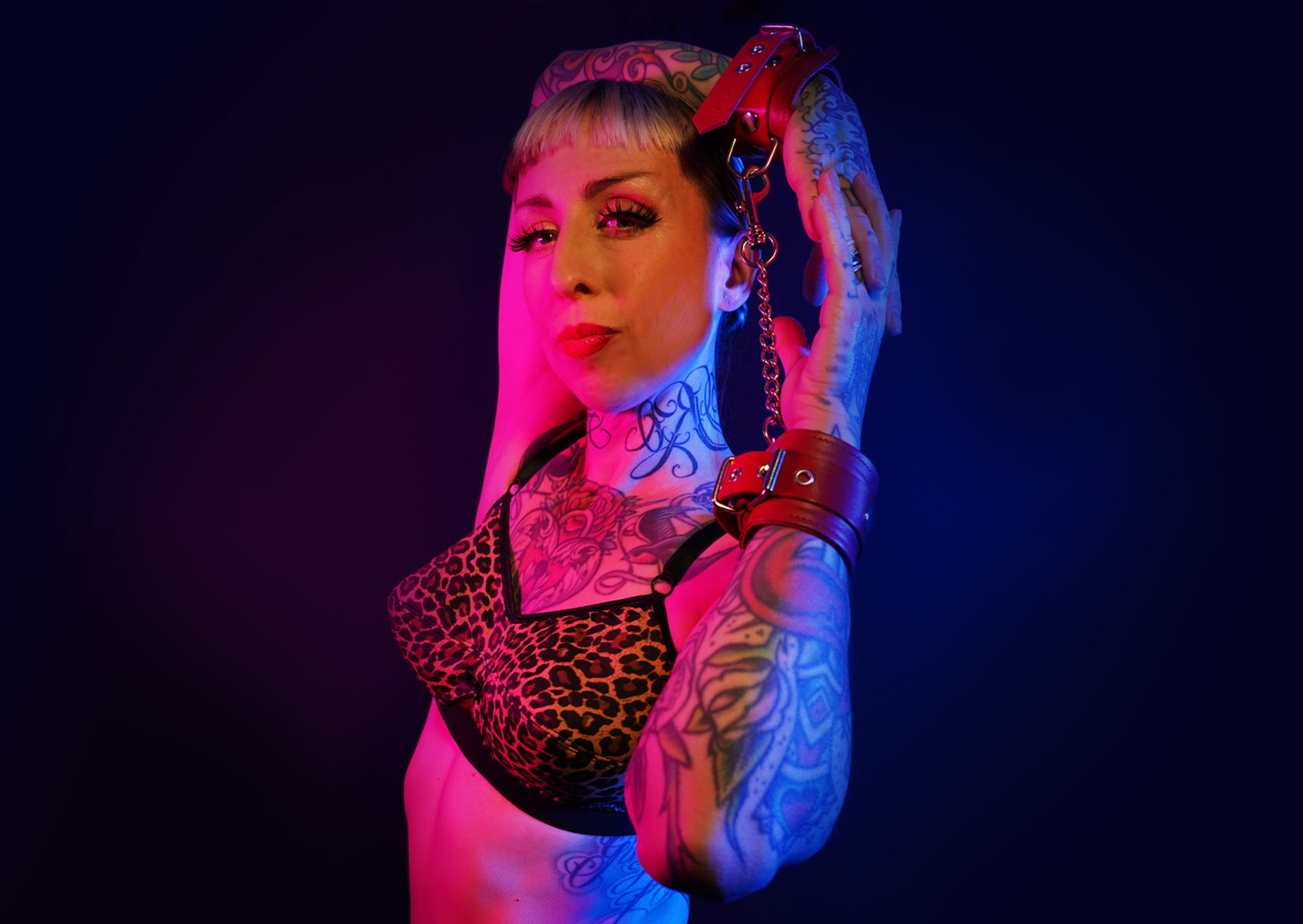Understanding Bigender Identity
Bigender identity is an expansive and multifaceted experience that defies traditional binary understandings of gender. It encompasses the recognition of two distinct gender identities within oneself, which may fluctuate or remain relatively stable over time. Individuals who identify as bigender navigate a unique path, challenging societal norms and embracing the fluidity and complexity of their own gender expressions.
Definition and Characteristics
Bigender individuals experience a sense of belonging to two genders simultaneously. These genders can be any on the gender spectrum, not necessarily male and female. Some bigender people may feel strongly connected to both genders at all times, while others may experience shifts in their predominant gender identity depending on various factors like mood, context, or day-to-day experiences.
It’s important to understand that bigender is not the same as transgender. While both involve gender identities that differ from assigned sex at birth, bigender people identify with two genders, whereas transgender people typically identify with a gender different from the one they were assigned at birth.
Spectrum of Experience
Bigender identity encompasses a spectrum of experiences, each unique and valid. Some bigender individuals may feel equally connected to both genders simultaneously, experiencing a sense of wholeness and duality. Others might find that their connection to one gender is stronger at certain times, leading to fluctuations in how they express their gender.
These shifts can be influenced by various factors, such as emotional states, social situations, or even the passage of time. For some, it may feel like a dance between two distinct identities, while for others, it might be a more fluid and seamless blend.
It’s crucial to recognize that there is no right or wrong way to be bigender. The beauty lies in the diversity of experiences within this identity.
Common Misconceptions
Understanding bigender identity requires moving beyond simplistic binary notions of gender. Bigender individuals identify with two distinct gender identities, which may fluctuate or remain stable over time.
Common misconceptions can hinder genuine understanding. Here are some key points to consider:
- Bigender is not the same as transgender. While both involve a disconnect between assigned sex at birth and gender identity, bigender individuals identify with two genders, while transgender individuals typically identify with one gender different from their assigned sex.
- Bigender is not a phase or a trend. It is a valid and enduring gender identity.
- There’s no “right” way to be bigender. Experiences vary widely, with some individuals experiencing stable dual identities and others experiencing shifts in their predominant gender identification.
- Respecting pronouns is essential. Use the pronouns that align with an individual’s self-identified gender(s).
Daily Experiences of Bigender Individuals
Daily life for bigender individuals involves navigating a world often structured around binary gender norms. This can mean constantly adjusting to societal expectations and challenging assumptions based on appearance or perceived gender roles.
Gender Expression and Presentation
For some bigender individuals, expressing their two genders might involve incorporating aspects of both into their daily attire, hairstyle, or mannerisms. Others may choose to present themselves differently depending on the context, shifting between expressions that align with each of their gender identities.
This fluidity in presentation can lead to unique experiences and challenges. It’s possible for bigender individuals to face microaggressions or misunderstandings from those who are unfamiliar with non-binary gender identities.

Finding supportive communities and allies is crucial for bigender individuals, providing a space where they can feel accepted and understood.
Social Interactions and Assumptions
Bigender individuals navigate a world that often operates within binary gender frameworks. This can lead to daily experiences that involve navigating assumptions based on appearance or perceived gender roles.
- Presenting themselves in ways that express both of their genders might involve incorporating elements from both identities into their clothing, hairstyle, or mannerisms.
- Some bigender people may choose to present differently depending on the context, shifting between expressions that align with each of their gender identities.
- Fluidity in presentation can lead to microaggressions and misunderstandings from those unfamiliar with non-binary gender identities.
Finding supportive communities and allies is essential for bigender individuals, creating spaces where they feel accepted and understood.
Internal Conflicts and Fluctuations
Bigender identity encompasses the recognition of two distinct gender identities within oneself, which may fluctuate or remain relatively stable over time. Individuals who identify as bigender navigate a unique path, challenging societal norms and embracing the fluidity and complexity of their own gender expressions.
- Some bigender people may feel strongly connected to both genders at all times, while others may experience shifts in their predominant gender identity depending on various factors like mood, context, or day-to-day experiences.
- Bigender is not the same as transgender. While both involve gender identities that differ from assigned sex at birth, bigender people identify with two genders, whereas transgender people typically identify with a gender different from the one they were assigned at birth.
Within this identity, individuals may experience internal conflicts as they grapple with societal expectations and their own evolving sense of self. Fluctuations in gender expression can lead to feelings of uncertainty or questioning, especially when navigating environments that primarily reinforce binary gender norms.
For some, these shifts might be accompanied by a sense of discomfort or dissonance, as they strive to align their outward presentation with the complex interplay of their internal identities.

It’s important to remember that these internal conflicts are often a natural part of the bigender experience. They stem from the inherent complexity of navigating a world that struggles to comprehend the spectrum of gender identities beyond the binary.
Understanding bigender identity requires moving beyond simplistic binary notions of gender. Bigender individuals identify with two distinct gender identities, which may fluctuate or remain stable over time.
Navigating Societal Structures
Navigating societal structures as a bigender individual presents unique challenges and complexities. A world often structured around rigid binary gender norms can lead to constant adjustments and the need to challenge assumptions based on appearance or perceived roles.
Legal and Institutional Recognition
Bigender individuals may face difficulties in spaces that lack recognition of non-binary genders. This can include legal systems, healthcare institutions, and even everyday social interactions.
Legal recognition often relies on binary categories for gender, making it challenging for bigender people to access legal documents, healthcare services, or other benefits that might require specifying a gender.
In healthcare settings, providers may not be familiar with bigender identities, leading to misgendering or a lack of understanding regarding their specific needs. Access to appropriate medical care, including hormone therapy or gender-affirming surgeries, can be further complicated.
Social institutions, such as schools or workplaces, may also present challenges. Policies and procedures often default to binary categories for things like restroom access, housing options, or even sports teams.
These systemic barriers highlight the need for greater societal awareness and inclusivity regarding non-binary gender identities.
Promoting legal recognition of multiple genders, educating healthcare providers on gender diversity, and advocating for inclusive policies in social institutions are crucial steps towards creating a more equitable environment for bigender individuals.
Workplace Dynamics
Navigating societal structures as a bigender individual presents unique challenges. A world often structured around rigid binary gender norms can lead to constant adjustments and the need to challenge assumptions based on appearance or perceived roles.
Bigender individuals may face difficulties in spaces that lack recognition of non-binary genders. This can include legal systems, healthcare institutions, and even everyday social interactions.
Legal recognition often relies on binary categories for gender, making it challenging for bigender people to access legal documents, healthcare services, or other benefits that might require specifying a gender.
In healthcare settings, providers may not be familiar with bigender identities, leading to misgendering or a lack of understanding regarding their specific needs. Access to appropriate medical care, including hormone therapy or gender-affirming surgeries, can be further complicated.
Social institutions, such as schools or workplaces, may also present challenges. Policies and procedures often default to binary categories for things like restroom access, housing options, or even sports teams.
These systemic barriers highlight the need for greater societal awareness and inclusivity regarding non-binary gender identities. Promoting legal recognition of multiple genders, educating healthcare providers on gender diversity, and advocating for inclusive policies in social institutions are crucial steps towards creating a more equitable environment for bigender individuals.
Relationships and Family Acceptance
Bigender experiences encompass navigating two distinct gender identities within oneself, which can fluctuate or remain relatively stable over time. This journey often involves challenging societal norms that primarily adhere to binary understandings of gender.
Relationships, whether romantic, familial, or platonic, play a crucial role in the bigender experience. Finding acceptance and understanding from loved ones is essential for emotional well-being and self-affirmation.
Navigating relationships can present unique challenges. Misunderstandings regarding gender expression, pronoun usage, or the fluidity of identity might arise if individuals are not familiar with non-binary experiences.
Open communication is vital for fostering understanding and respect within these relationships. Bigender individuals may need to educate loved ones about their identities, explaining the complexities and nuances of their gender expressions.
Family acceptance can significantly impact a bigender person’s journey. Coming out to family members might be met with varying reactions, ranging from acceptance and support to confusion or even rejection.
Building bridges of understanding takes time, patience, and empathy. Sharing personal stories, providing resources about bigender identities, and engaging in open dialogue can help families come to terms with their loved ones’ gender expressions.
Supportive allies within the family structure can provide invaluable emotional support and advocacy.
Finding Community and Support
Finding community and support is crucial for bigender individuals navigating a world that often struggles to understand non-binary gender identities.
Online and Offline Groups
Finding community and support is essential for bigender individuals, providing a space where they can feel accepted and understood.
Online communities offer valuable connections with others who share similar experiences.
Platforms like social media groups, forums, or online support networks allow bigender individuals to connect with like-minded people from around the world, fostering a sense of belonging and shared understanding.
These online spaces can be particularly helpful for those who live in areas where access to physical support groups might be limited.
Offline communities provide opportunities for face-to-face interaction and real-world support.
Local LGBTQ+ centers, social clubs, or advocacy organizations often host meetups or events specifically designed for bigender individuals.
Engaging in these activities can help build friendships, share experiences, and create a sense of belonging within a wider community.
It’s important to seek out communities that align with personal values and needs.
Therapy and Counseling Resources
Finding community and support is essential for bigender individuals, providing a space where they can feel accepted and understood.
Online communities offer valuable connections with others who share similar experiences. Platforms like social media groups, forums, or online support networks allow bigender individuals to connect with like-minded people from around the world, fostering a sense of belonging and shared understanding. These online spaces can be particularly helpful for those who live in areas where access to physical support groups might be limited.
Offline communities provide opportunities for face-to-face interaction and real-world support. Local LGBTQ+ centers, social clubs, or advocacy organizations often host meetups or events specifically designed for bigender individuals. Engaging in these activities can help build friendships, share experiences, and create a sense of belonging within a wider community.
It’s important to seek out communities that align with personal values and needs.
Therapy and counseling can also be invaluable resources for bigender individuals.
Finding a therapist who is knowledgeable about gender identity and experienced in working with LGBTQ+ clients can provide a safe space to explore complex emotions, navigate challenges related to self-acceptance, and develop coping mechanisms for dealing with societal stigma or discrimination.
Counseling can help individuals process experiences of coming out, build self-esteem, and learn strategies for advocating for their needs in various aspects of life.
Resources like the Trevor Project and the Human Rights Campaign offer support hotlines, online chat services, and other valuable information specifically for LGBTQ+ youth and adults.
Building Self-Acceptance and Confidence
Building self-acceptance is a crucial part of the bigender experience. It’s about recognizing and embracing both aspects of your gender identity, regardless of societal expectations or pressures.
This journey often involves confronting internal conflicts and questioning societal norms that may clash with your true sense of self.
Self-acceptance doesn’t happen overnight; it’s a process that takes time, patience, and self-compassion. It requires challenging negative thoughts or beliefs about yourself that stem from societal stereotypes or internalized prejudice.
Surrounding yourself with supportive people who understand and accept your identity is essential for this journey.
Building confidence as a bigender individual involves recognizing the validity of your experiences and expressing your gender in ways that feel authentic to you, regardless of others’ perceptions.
This might involve exploring different styles of dress, mannerisms, or social expressions that align with both aspects of your gender identity.
Remember that there is no “right” way to be bigender.
how to make him cum fast
Bey Bey Name
- Why Can’t You Smoke After Lip Filler - November 12, 2025
- What Is The Best Filler For Chin And Jawline? - November 10, 2025
- What Are THC Drinks And How Do They Work? - November 7, 2025

